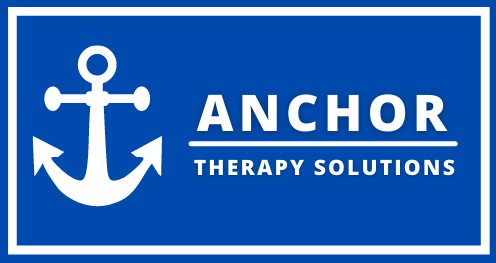Orthopedic Injuries
Orthopedic injuries can significantly impact an individual's physical functioning and overall quality of life. These injuries may often affect the bones, joints, muscles, ligaments, and tendons, require comprehensive rehabilitation and pain management approaches to facilitate optimal recovery. In this blog post, we will delve into the world of orthopedic injuries from the perspective of an occupational therapist specializing in UE rehabilitation.
Understanding Orthopedic Injuries
Orthopedic injuries can range from fractures, dislocations, and sprains to conditions like arthritis, carpal tunnel syndrome, and tendonitis. Each injury presents unique challenges, necessitating a customized treatment plan. As an occupational therapist specializing in hand therapy, my primary focus is on injuries and conditions affecting the upper extremity, including the hand, wrist, and forearm.
Role of Occupational Therapy in Rehabilitation
Occupational therapy plays a crucial role in the rehabilitation of orthopedic injuries, with a strong emphasis on functional independence. As an occupational therapist, my goal is to help individuals regain or improve their ability to perform daily activities, such as dressing, grooming, cooking, and working, despite the challenges posed by their hand injury.
Comprehensive Evaluation: The rehabilitation process begins with a thorough evaluation to assess the extent of the injury, identify functional limitations, and understand the individual's specific goals. This evaluation may involve assessing range of motion, strength, sensation, coordination, and dexterity.
Individualized Treatment Plan: Based on the evaluation findings, a personalized treatment plan is developed, targeting the specific needs and goals of the individual. The treatment plan may include therapeutic exercises, manual therapy techniques, splinting, pain management strategies, and adaptive equipment recommendations.
Therapeutic Exercises: Exercise plays a vital role in rehabilitating orthopedic injuries. Occupational therapists guide individuals through a range of exercises designed to improve strength, flexibility, coordination, and endurance. These exercises may focus on the hand, wrist, forearm, and even the shoulder, as they are intricately connected.
Manual Therapy Techniques: Manual therapy techniques, such as soft tissue mobilization, joint mobilization, nerve gliding, trigger point, manual lymphatic drainage, and scar management, are employed to promote tissue healing, increase joint range of motion, and reduce pain and swelling.
Splinting: Customized splints and orthoses are often used in hand therapy to support and protect the injured structures, promote proper alignment, and facilitate healing. Splints can be static or dynamic, depending on the stage of recovery and specific requirements of the injury.
Pain Management Strategies: Orthopedic injuries can be accompanied by varying levels of pain. Occupational therapists employ various pain management strategies, including therapeutic modalities (e.g., heat/cold therapy, laser therapy, cupping, kinesiotaping, electrical stimulation), activity modification, relaxation techniques, and patient education.
Adaptive Equipment and Environmental Modifications: In cases where an individual's hand injury causes permanent limitations, occupational therapists recommend and train the use of adaptive equipment and assistive devices to maximize independence in daily activities. They may also suggest modifications to the individual's home or work environment to optimize functionality and safety.
Functional Training: As rehabilitation progresses, occupational therapists focus on functional training, guiding individuals through activities that simulate real-life tasks. This may include practicing gripping and grasping objects, manipulating small tools, and performing work-related activities, tailored to the individual's specific needs.
Pain Management in Orthopedic Injuries
Pain is a common companion to orthopedic injuries, often affecting an individual's ability to engage in rehabilitation and daily activities. As an occupational therapist, I employ a multi-faceted approach to pain management, which may include:
Education: Educating individuals about their injury, the expected healing process, and pain management techniques empowers them to take an active role in their recovery journey.
Activity Modification: Modifying activities to minimize pain and avoid exacerbating the injury is an essential strategy. By understanding individual limitations and implementing adaptive techniques, individuals can continue to engage in meaningful activities while avoiding further injury.
Therapeutic Modalities: Modalities such as heat, cold, ultrasound, electrical stimulation, and transcutaneous electrical nerve stimulation (TENS) can be used to alleviate pain, reduce inflammation, and promote tissue healing.
Medications: Occupational therapists work closely with healthcare providers to manage pain medications effectively. They provide input regarding functional limitations and the impact of pain on daily activities, ensuring that the medications prescribed are appropriate and optimized for functional goals.
Psychological Support: Orthopedic injuries can be emotionally challenging for individuals. Occupational therapists provide emotional support, address anxiety and depression related to the injury, and offer coping strategies to enhance overall well-being. Our therapists provide holistic care meaning, not just physical rehabilitation, but also psychological reframing (CBT/DBT) to improve quality of life.
Conclusion
Orthopedic injuries can significantly impact an individual's life, particularly when they affect the hands. However, with the expertise of our occupational therapist specializing in UE therapy, individuals can regain functionality, manage pain, and restore independence. Through comprehensive evaluations, personalized treatment plans, therapeutic exercises, manual therapy techniques, splinting, pain management strategies, and adaptive equipment recommendations, occupational therapists provide a holistic approach to rehabilitation. By collaborating with individuals, their families, and the healthcare team, occupational therapists play a pivotal role in facilitating the recovery process and helping individuals regain control of their lives after orthopedic injuries.


